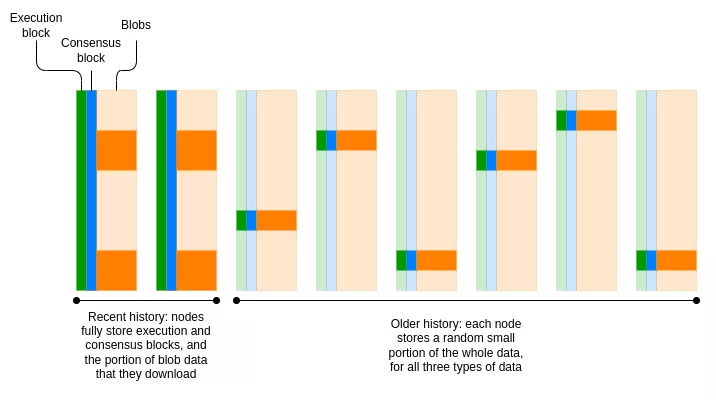
Ethereum co-founder Vitalik Buterin highlighted the growth in transaction volume and blockchain complexity as the key challenges facing the network and presented his recommendations for addressing these issues.
Possible futures of the Ethereum protocol, part 5: the Purgehttps://t.co/ccGZDxgT6O
— vitalik.eth (@VitalikButerin) October 26, 2024
In the fifth section of his essay, “The Possible Future of Ethereum Protocol,” titled “The Purge,” Buterin identified two main “bottlenecks”:
- Storage of Historical Data — Every transaction and account must be stored forever, forcing clients to download all data for synchronization. This gradually increases the storage requirements.
- Protocol Features — Adding new features is easier than removing old ones, which complicates the code.
“To ensure the sustainability of Ethereum, we must actively combat these trends by reducing complexity and data volume. However, it is important to maintain the core quality of blockchains — their immutability,” said Buterin.
Currently, full synchronization of an Ethereum node requires about 1.1 TB for the execution client and several hundred gigabytes more for the consensus client.
Buterin proposed a solution to the problem, suggesting that each node should store only a small portion of the data. The goal of “The Purge” stage is to simplify the launch of clients on regular PCs. This would enable the creation of a network of 100,000 nodes, each storing 10% of the historical data, ensuring full data replication and maintaining 10,000 copies of each fragment.

Buterin explained that out of the total 1.1 TB of the execution client, about 800 GB is taken up by history, while the remaining part consists of the current state data.
The reduction in volume could be achieved by setting a data retention period and partially restoring data as needed. Regarding simplifying the protocol, he emphasized that removing “redundant” features would require some compromises in compatibility.
“There is no one-size-fits-all solution to reducing protocol complexity; the issue requires a lot of small fixes,” Buterin added.
Some improvements, such as removing outdated transaction types or simplifying the data format, can be implemented relatively easily. However, changes to other functions embedded in the EVM would require deeper analysis and technical refinement.








 Cryptol – your source for the latest news on cryptocurrencies, information technology, and decentralized solutions. Stay informed about the latest trends in the digital world.
Cryptol – your source for the latest news on cryptocurrencies, information technology, and decentralized solutions. Stay informed about the latest trends in the digital world.